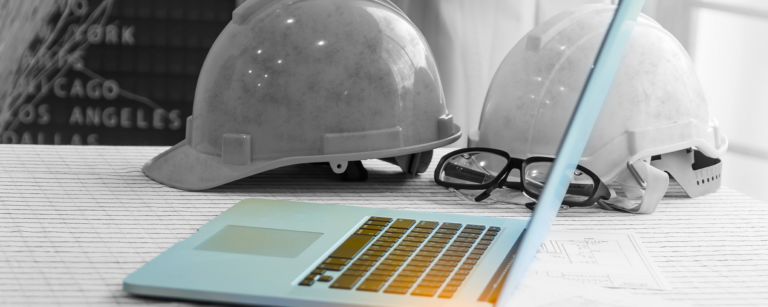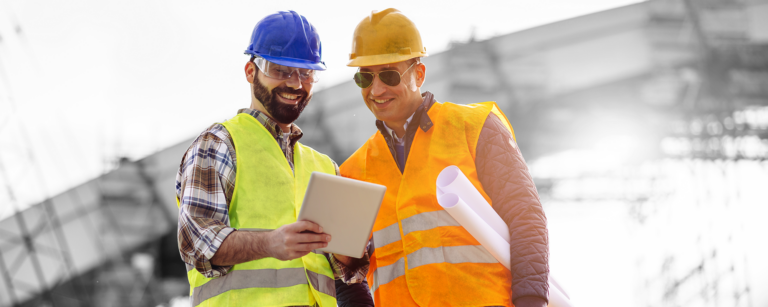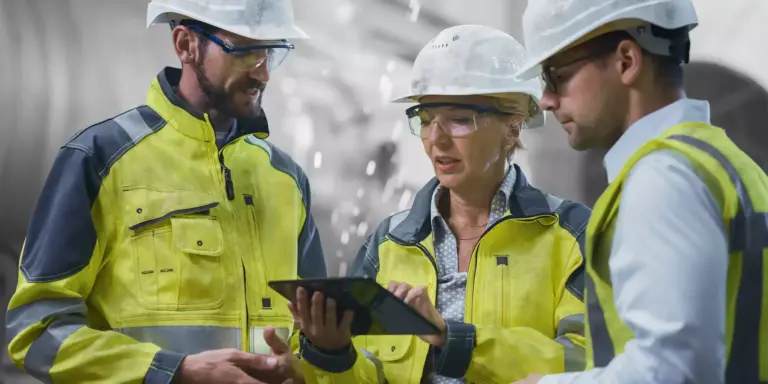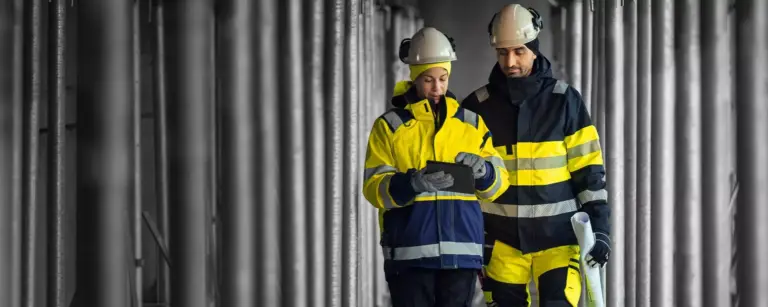Focus on Infrastructure:
Using Technology to Mitigate Construction Safety Risks
April 21, 2022
In the lead up to any infrastructure construction project, there is wide acknowledgement that many such aging structures have safety issues. Those safety concerns generally center around the impact on the public and the surroundings. As such projects move from the bidding and planning stages to the execution stage over months and years, the focus naturally shifts to construction safety.
Though traditional safety gear and procedures are a given on any project, construction software technology is playing a relatively new and decidedly vital role in mitigating construction safety risks on the jobsites as infrastructure projects get under way — whether it’s a full-on demolition and rebuild or a retrofitting. Fortunately, you have several options to consider, whether individually or in combination.
BIM — Building information modeling (BIM) for managing safety risks? Absolutely. Think of it like the Swiss Army knife of construction safety risk management, with multiple tools that allow you to approach risks in different ways. One tool that sets BIM apart is its 3D visualization capabilities, allowing you to virtually see through, walk through and fly over different portions of the model, including the surrounding environment. It’s a proactive approach to identifying and analyzing safety issues — especially those that may be unavoidable — while there’s time and opportunity to implement safety precaution measures.
While this will definitely work for new infrastructure projects, it can also work for older ones too so long as complete project data is available to input and link to each component within the BIM model. That data creates a more accurate model that can help teams see potential hazards and accurately assess how to safely work around areas that may be structurally compromised.
And then there’s BIM’s communication platform. The platform serves as a channel through which project team members can share information about real-time hazards discovered or created during construction. It’s through this collaborative hub that related disciplines can collaboratively explore the most feasible ways to address those safety issues — particularly when tapping into BIM’s visualization feature to add context to jobsite risks.
On a less interactive scale, BIM acts as a source of safety information. With project details contained within its common data environment (CDE), it acts as a repository for, among other things, safety-related details on each individual component used in the build, including material handling, and safety protocols for that particular project.
Safety compliance inspection — Construction inspection software with mobile access has turned what was once a tedious process into a much more streamlined one. Through standard checklists and customized forms that account for unique project-specific requirements, it’s now possible to record hazards and safety incidents in real time. It’s that critical timing that allows teams to begin resolution of safety-related issues immediately, reducing the potential threat to physical harm or jobsite integrity and safety.
Commissioning — Alone, commissioning software also can take on the role of construction safety compliance reporting. In tandem with inspection software, it can supplement the safety compliance process, which is especially helpful for larger infrastructure projects. As with inspection software, timing plays a role here, too. Regular commissioning, when begun at the start of the project, shortens the traditionally end-of-project punch list and rework that have often seen a jump in injuries as workers scramble to meet the original completion deadline.
Risk management — Similar to inspection and commissioning software, risk management software puts the focus on prevention. Choosing a cloud-based platform is what will make the biggest difference. Why? It’s all about anywhere, anytime access to and uploading of safety-related information. The cloud centralizes the kinds of documentation that can lower the incidence of preventable injuries and accidents: training records, injury and incident reports (complete with photo and video evidence), operating manuals for machinery, material safety data sheets for handling materials on-site.
Quality assurance (QA) — This might seem a bit removed from having a direct impact on safety, but it really isn’t. Why? All the checklists and forms in the world won’t deliver their full value if there isn’t a plan for how and when to use them. It starts with planning at the very beginning to put processes in place for project requirement adherence, and quality and safety inspection schedules. Use your QA plan to outline frequency of quality check walkthroughs, safety inspections and rolling punch lists, and to define issue resolution protocols necessary to remedy defects.
Construction safety starts with injury and incident prevention; and that starts before construction even begins. Of course, though not every safety risk is able to be eliminated completely, the above list does represent some helpful options to explore and invest in to dramatically reduce their number. An option like InEight construction safety and quality may be able to help. Arrange for a demo to find out how it can enable you to better protect your workers and jobsite.




